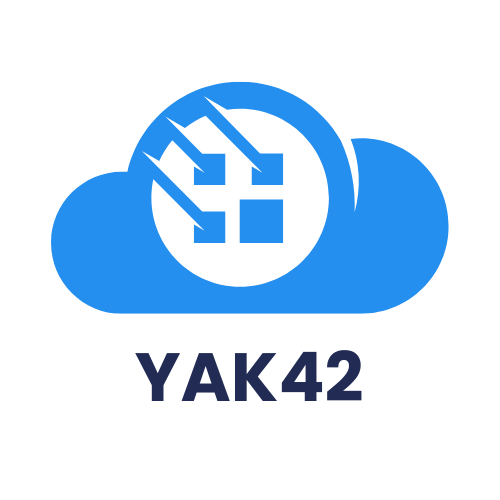Table of Contents
ToggleIn today’s digital landscape, businesses rely heavily on cloud services to drive efficiency and innovation. However, as organizations scale, maintaining peak performance can become a daunting challenge. Cloud performance optimization is essential for ensuring applications run smoothly, resources are utilized effectively, and costs remain manageable.
With the right strategies in place, companies can enhance their cloud infrastructure, improve response times, and deliver a seamless user experience. This article explores key techniques and best practices for optimizing cloud performance, enabling businesses to harness the full potential of their cloud environments. Whether it’s through advanced monitoring tools or strategic resource allocation, understanding these principles is crucial for staying competitive in an ever-evolving market.
Understanding Cloud Performance Optimization
Cloud performance optimization involves enhancing the efficiency and effectiveness of cloud services to ensure high availability and responsiveness. It plays a crucial role in maximizing resource utilization while minimizing costs.
Definition and Importance
Cloud performance optimization refers to the process of improving the performance and reliability of cloud-based applications and services. This optimization is vital for organizations to achieve business objectives, maintain user satisfaction, and ensure competitive advantage. Efficient cloud performance leads to faster application load times, improved data processing capabilities, and better resource management, ultimately contributing to an organization’s bottom line.
Key Metrics to Measure Performance
Organizations should track the following key metrics to assess cloud performance effectively:
- Latency: Measures the time taken for a request to travel from the client to the server and back. Lower latency correlates with better user experience.
- Throughput: Indicates the amount of data processed by the cloud system over a specific time period. Higher throughput signifies better performance and efficiency.
- Error Rate: Calculates the percentage of requests that result in errors. A low error rate reflects a stable and reliable cloud environment.
- Uptime: Represents the percentage of time a service is operational. High uptime guarantees availability and reliability for users.
- Resource Utilization: Assesses how effectively cloud resources (CPU, memory, storage) are being utilized. Optimal resource utilization minimizes costs and maximizes performance.
By focusing on these metrics, organizations can gain insights into performance bottlenecks and areas for improvement, ultimately driving successful cloud performance optimization strategies.
Techniques for Cloud Performance Optimization

Implementing effective techniques for cloud performance optimization enhances overall efficiency and ensures reliable application delivery. Two key areas that contribute significantly to this process are resource management strategies and load balancing solutions.
Resource Management Strategies
Optimized resource management strategies enable organizations to allocate cloud resources efficiently.
- Auto-scaling: Automation allows for dynamic adjustment of resources based on real-time demand, optimizing costs and performance.
- Resource tagging: Tagging cloud resources aids in identifying usage patterns, facilitating better tracking and allocation of resources.
- Capacity planning: Evaluating current and future resource needs ensures that demand is met without overspending on excess capacity.
- Cost monitoring: Implementing tools to track expenditure on cloud services promotes efficient budget management and resource optimization.
Load Balancing Solutions
Effective load balancing solutions distribute workloads across multiple servers.
- Round-robin: This method cycles requests through a list of servers, promoting even distribution of traffic and preventing server overload.
- Least connections: Assigning new requests to the server with the fewest active connections ensures that no single server becomes a bottleneck.
- IP hash: This technique routes requests based on the client’s IP address, enhancing session persistence and reducing latency.
- Health checks: Regular monitoring of server health allows load balancers to redirect traffic from unhealthy servers, maintaining service availability.
By applying these techniques, organizations can significantly enhance their cloud performance, maintain user satisfaction, and ensure a competitive edge in the market.
Tools for Cloud Performance Optimization
Optimizing cloud performance requires utilizing a variety of tools designed for monitoring, analytics, automation, and scaling. These tools help organizations enhance the efficiency of their cloud operations and ensure optimal resource utilization.
Monitoring and Analytics Tools
Monitoring and analytics tools are vital for tracking cloud performance metrics. These tools provide real-time insights into application performance, resource utilization, and overall system health.
- Amazon CloudWatch: This service monitors AWS resources, delivering metrics and logs for cloud applications. It enables users to automate actions based on predefined thresholds.
- Prometheus: An open-source monitoring system that collects and stores metrics, Prometheus supports powerful queries and visualizations, making it easier to track performance.
- Datadog: This monitoring platform integrates with various cloud services, offering dashboards and alerts for application performance and infrastructure monitoring.
- New Relic: This tool provides full-stack observability, enabling organizations to analyze user experiences and application performance across cloud environments.
These tools help identify bottlenecks, track latency, and ensure high uptime, ultimately improving user satisfaction.
Automation and Scaling Tools
Automation and scaling tools facilitate efficient resource management by dynamically adjusting capacity in response to demand. These tools enable organizations to optimize cloud resource allocation without manual intervention.
- AWS Auto Scaling: This service automatically adjusts capacity for AWS resources according to predetermined conditions, ensuring applications perform optimally during fluctuating workloads.
- Kubernetes: An orchestration tool for automating deployment, scaling, and management of containerized applications, Kubernetes offers self-healing capabilities and scaling based on traffic.
- Azure Automation: This service automates cloud management tasks, allowing users to schedule and manage updates, scaling, and active resource monitoring effectively.
- Google Cloud Functions: This event-driven serverless computing service lets users run code in response to triggers, optimizing resource usage and reducing costs by eliminating idle resources.
Utilizing these automation and scaling tools allows organizations to adapt quickly to changing demand while maintaining optimal performance and cost effectiveness.
Challenges in Cloud Performance Optimization
Organizations often face significant challenges when optimizing cloud performance. These challenges can arise from various technical and operational factors that impact application efficiency and resource management.
Common Performance Issues
- Latency: High latency affects response times, resulting in slow user experiences and productivity loss. Network delays, geographic distances, and inefficient data access contribute to this issue.
- Throughput: Insufficient throughput limits the volume of processed data per unit time. Factors like network bandwidth and resource allocation directly influence throughput levels.
- Error Rates: Elevated error rates can disrupt application functionality and undermine user trust. Bugs in software, misconfigured resources, and inadequate testing contribute to this challenge.
- Uptime: Low uptime impacts service availability, leading to potential revenue loss and dissatisfaction. Hardware failures, software issues, and maintenance windows can reduce operational availability.
- Resource Utilization: Inefficient resource utilization can lead to over-provisioning or under-provisioning. This misalignment often results in increased costs or underperformance in service delivery.
Overcoming Optimization Hurdles
- Implementing Robust Monitoring: Leveraging advanced monitoring solutions helps in identifying performance bottlenecks. Tools like Amazon CloudWatch and Datadog provide critical insights into application behavior, allowing teams to make informed adjustments.
- Adopting Automation: Automation tools enable organizations to scale resources dynamically, responding to fluctuating demands efficiently. Solutions like AWS Auto Scaling reduce manual intervention, streamlining resource management.
- Conducting Regular Audits: Performing routine assessments of cloud infrastructure helps in identifying inefficiencies. These audits should focus on resource allocation and application performance to pinpoint areas for enhancement.
- Optimizing Network Configurations: Ensuring optimal network configurations enhances overall performance. Factors like Content Delivery Networks (CDNs) and optimized routing can reduce latency and improve throughput.
- Training Staff: Educating team members on cloud technology and optimization best practices fosters a proactive approach to performance challenges. Regular training sessions and workshops can enhance awareness and skills.
Future Trends in Cloud Performance Optimization
Technological advancements and evolving business needs shape the future of cloud performance optimization. Organizations increasingly adopt innovative methodologies and tools to enhance their cloud environments.
Emerging Technologies
Emerging technologies drive significant shifts in cloud performance optimization practices. These include:
- Artificial Intelligence (AI): AI streamlines operations by automating routine tasks and analyzing data patterns. Predictive analytics allows organizations to foresee demand changes and allocate resources efficiently.
- Machine Learning (ML): ML algorithms optimize resource allocation based on usage trends. They facilitate dynamic adjustments to applications, ensuring peak performance during varying workload conditions.
- Edge Computing: Edge computing addresses latency issues by processing data closer to its source. Organizations utilizing this technology experience reduced response times and improved user experiences.
- 5G Technology: 5G networks enhance connectivity and bandwidth, enabling faster data transfer and better performance for cloud applications, particularly in mobile and IoT environments.
- Serverless Architecture: Serverless computing reduces infrastructure management burdens, allowing developers to focus on application code. This model optimizes resource usage and improves cost efficiency.
Predictions for the Future
The landscape of cloud performance optimization is set to evolve substantially. Key predictions include:
- Increased Reliance on Automation: Organizations will increasingly automate performance optimization tasks, allowing teams to concentrate on strategic initiatives while algorithms handle routine adjustments.
- Greater Focus on Sustainability: Businesses will prioritize eco-friendly cloud practices. Sustainable resources and energy-efficient configurations will become crucial for performance optimization.
- Enhanced Security Measures: As cloud computing becomes more prevalent, organizations will implement robust security measures. Security and performance optimization will intertwine, ensuring safe and efficient environments.
- Integration of Multicloud Strategies: Organizations will adopt multicloud approaches to leverage the strengths of different providers. This trend will demand advanced optimization techniques to manage diverse environments effectively.
- Evolution of Cloud-native Development: Cloud-native development practices will gain traction, promoting the creation of scalable, resilient applications designed for optimized cloud environments.
By harnessing these trends, organizations can enhance their cloud performance, ensuring they remain competitive in a rapidly changing landscape.
Optimizing cloud performance is vital for organizations aiming to thrive in today’s digital landscape. By implementing effective strategies and utilizing advanced tools, businesses can significantly enhance their cloud infrastructure and user experiences.
Staying ahead requires a commitment to continuous improvement and adaptation to emerging technologies. As organizations embrace trends like AI, Edge Computing, and multicloud strategies, they position themselves for long-term success.
Ultimately, a proactive approach to cloud performance optimization not only boosts efficiency but also ensures a competitive edge in an ever-evolving market.







